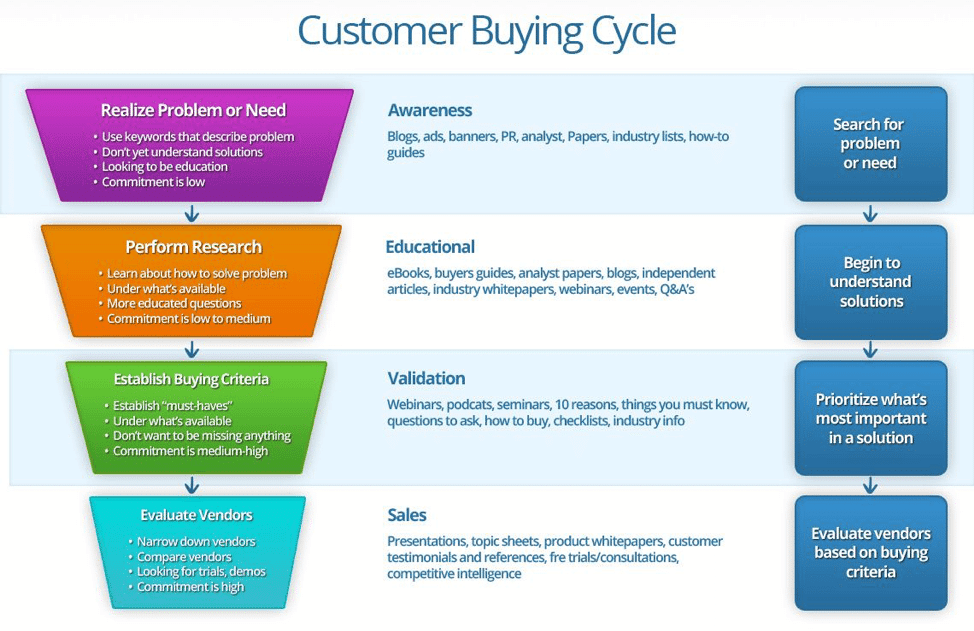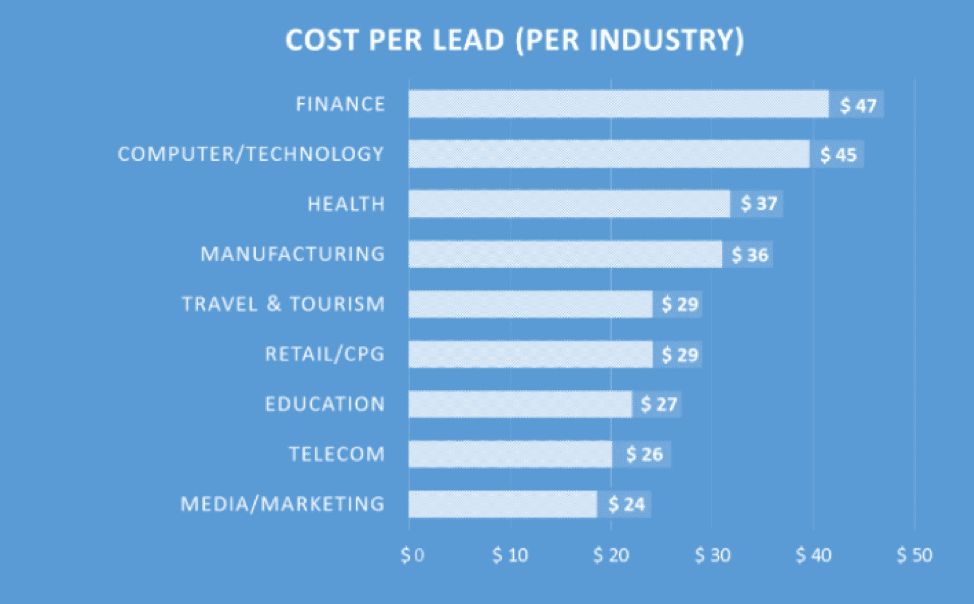Did you know that 84% of marketers cannot measure and report on the contribution of their programs to the business, and that only 44% of CMOs say that they can measure ROI?
With these two stats in mind, it’s no wonder why so many businesses are still facing challenges when it comes to dissecting the value behind the data that they collect. In this blog post, I’ll look at four specific marketing analytics hacks you should adopt to get started in the right direction.
Before diving in, it is important that you have a marketing funnel that paints what the customer buying cycle looks like. Doing so will help you understand specific lifecycle stages that your target customers will potentially fall into, how you can best meet their needs in each stage, and what more can be done to push them into becoming a sales qualified lead (SQL)/sales accepted lead (SAL). Here’s an example:

1) Have a deep understanding of your website traffic
The go-to tool for many businesses is Google Analytics (GA) because it is free and withholds a great amount of information that can tell you what’s happening on your website. You don’t have to be an expert to know how to navigate GA, but you absolutely should be an expert with nailing down the metrics you want to track and that matter most to your business.
Here are a few questions to ask yourself:
- What is the goal of your website? (E.g. drive leads, get tons of traffic, direct sales, educate, etc.)
- Do you know what the most popular pages on your website are?
- What are the top exit pages?
- Do you understand your target audience well enough to funnel them through your website and ultimately push them to take the actions you want them to?
Knowing the answers to these questions will help you make decisions on the following:
- How to better optimize your website.
- How to create content that meets the needs of your target audience.
- Build trust so that your website visitors can be converted into leads and sales.
- Pages on your website you may need to kill because they aren’t contributing to the goals you have set out for your website.
- How to do more of what is working, automate around this, and drive even more engagement.
2) Capture your visit to lead percentage and CPL
Gaining website traffic is great, but what’s even better is being able to turn this traffic into actual leads that can be nurtured further down your funnel.
Whether you’re driving hundreds, thousands, or millions of visitors to your site, know that capturing a percentage of this traffic into leads is where you’ll be able to calculate what your visit to lead percentage is. For example, consider you paid $5,000 on a PPC (pay-per-click) campaign and received 1500 website visits and 100 leads (100/1500*100) – your visit to lead percentage would be ~7%. This means 7 out of every 100 visitors is a lead, which is really good.
Now for CPL (cost-per-lead)… A common question I ask clients is: “How much are you willing to pay for a lead?” And often times, the response I get is, “Well, I’m not sure.”
Using the same example above to calculate your visit to lead percentage, you can easily calculate out your CPL ($5,000/100 = $50 CPL). So how do you know if that’s good? It depends on the cost of your service/product. Let’s say you’re selling an enterprise B2B product with an average contract value of $100,000 – that means, paying $50 per lead isn’t too shabby because if one converted into a sale, the money spent would have more than paid for itself. Here are some CPL industry averages to check out:

3) Know your lead to customers percentage and the top performing channels
Having the ability to say that you’ve successfully converted 100% of your leads into customers is every marketer and entrepreneur’s dream. But that is rarely ever the case.
Depending on the industry that you are in and ‘who’ you’re selling to, the conversion (i.e. sales) rate you may want to strive for can differ drastically. Simply put, let’s say you generated 100 leads and made 20 new sales, that means your lead to customer percentage is 20%.
The importance with this specific metric is to ensure that you are also breaking down the top performing channels, their conversion rates, and the lifetime value of each. Doing so will help you see where you need to allocate more of your marketing budget so that you are driving the best results to meet your goals.
4) Keep track of on and off site engagement
Did you know that 90% of your customers’ interactions with your brand take place off site?
When looking at off-site engagement such as your top referral sources, don’t just stop, for example, if you see that social media is driving a lot of website visits. Rather, look at how that engagement proliferates once on your website. People typically look at the referral traffic but not the actual engagement that takes place from social to website.Metrics to consider are: bounce rate, pages per session, time-on-site, top converting pages, etc.
More specifically, you can even dive in deeper by breaking out off-site and on site interactions to your overall marketing goals. Doing so will help you see which off-site interactions bring in the most qualified traffic, leads, and sales.
Final Thoughts
Going back to the beginning, it is important for any overarching marketing strategy to consider the customer journey and any and all data that can be collected, aggregated, and analyzed throughout. Doing so will enable you to pivot when needed and make adjustments to drive the best results. And, having targeted marketing analytics beneath a marketing strategy umbrella will be critical to your success.





